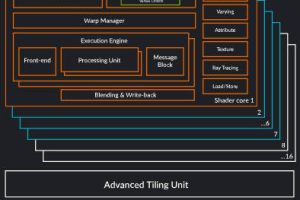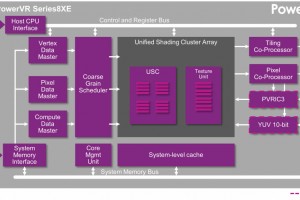Intel has announced a discrete graphics processing unit, aimed at vehicles being shipped in 2025. ‘Arc Graphics for Automotive’, or A760A, has 28 of the company’s Xe GPU cores, 28 ray tracing units, 448 matrix engines (XMX) for AI and 448 vector engines. It will be software-compatible with the GPUs integrated into its software-defined-vehicle processors, and used as an add-on ...
Tag Archives: GPU
Siggraph: AI compute cluster scales to 256 Nvidia L40S PCIe GPUs, and beyond
At Siggraph today, Supermicro announced a 4U PCIe rack processor cluster with eight Nvidia L40S PCIe GPUs (photo right), scalable up to 256 GPUs in a 32-node scalable unit (photo below). “A wide range of professionals depend on compute-intensive 3D workflows, with use-cases ranging from product design to industrial digital twins,” according to Supermicro. “Up to eight of the latest PCIe ...
Most Read articles – Air Taxi research, TI’s TDA4VM, US visa restrictions
An Innovation Park in Cambridge as was, Nasa research with autonomous drones, Intel buying the French fabless silicon and software company Silicon Mobility, and proposed revisions to the U.S.A. H-1B Visa programme...
GPU compute on TI processor delivers ADAS
MulticoreWare and Imagination have enabled GPU compute on TI’s TDA4VM processor, adding around 50 GFLOPS of extra compute and demonstrating improvement in the performance of common workloads used for ADAS systems (ADAS). The collaboration has achieved over 100x performance gains when running a stereo block matching (StereoBM) algorithm on the GPU rather than on the CPU on a high resolution ...
Arm announces next GPU architecture for phones
Arm has announced its 5th generation of GPU architecture and the first GPUs to be designed on it – Immortalis-G720 for high-end phones, Mali-G720 and Mali-G620. The 5th generation is “designed as the most efficient GPU architecture that Arm has ever created [and] redefines parts of the graphics pipeline to reduce memory bandwidth enabling high geometry games and real-time 3D ...
GPUs for wearables and TVs
Imagination Technologies has announced a series of smaller GPUs, but has not publicly released any technical details. Called CXM, at least some of them support 4K resolution, and at least some support 10bit RGBA and YUV ‘HDR (high dynamic range) operation. “CXM GPUs boast nearly 50% more performance in the same silicon area than IMG BXM cores,” according to the ...
GPU has 1.3Gray/s ray-tracing for games on phones
Imagination Technologies is aiming at phone-based gaming with scalable GPU intellectual property that can implement hardware ray-tracing. Called IMG DXT, and part of a planned ‘D-Series’ family, the GPUs “offers mobile device manufacturers the chance to integrate ray tracing into their SoCs, to match their design goals from premium to mainstream devices”, according to the company. The GPU scales from ...
Imagination Technologies picks MulticoreWare for GPU algorithm optimisation
Imagination Technologies has picked software services company MulticoreWare, which specialises in computer vision, sensor data and AI processing, as a software development partner to optimise algorithms on Imagination GPUs. “MulticoreWare is utilising our IP for general-purpose GPU applications. By working together, we can offer our customers an optimised PowerVR deployment,” said Imagination product director Gilberto Rodriguez. As a demonstration, the ...
Arm aims latest processors at high-end phone gaming
Arm’s is claiming “up to 28% more performance and up to 16% power reduction across a range of workloads, such as gaming”, for the phone GPUs and CPUs announced in its ‘2022 total compute solutions’ (TCS22). The CPUs are the second generation with the Armv9 architecture, and include Cortex-X3 and Cortex-A715. There are also updates to Cortex-A510 and the DSU-110 (DynamIQ shared ...
Imagination offers licence-free GPU and AI accelerator IP to early-stage companies
Imagination Technologies is offering early-stage companies access to IP for four of its PowerVR Series8XE GPUs and three Series3NX neural network accelerators without any licensing costs. “This lowers the barriers of entry to SoC design, enabling scale-ups to create IoT and AI products for applications covering smart home, industrial designs for smart cities or smart factories, smart kiosks and signage ...
 Electronics Weekly Electronics Design & Components Tech News
Electronics Weekly Electronics Design & Components Tech News









